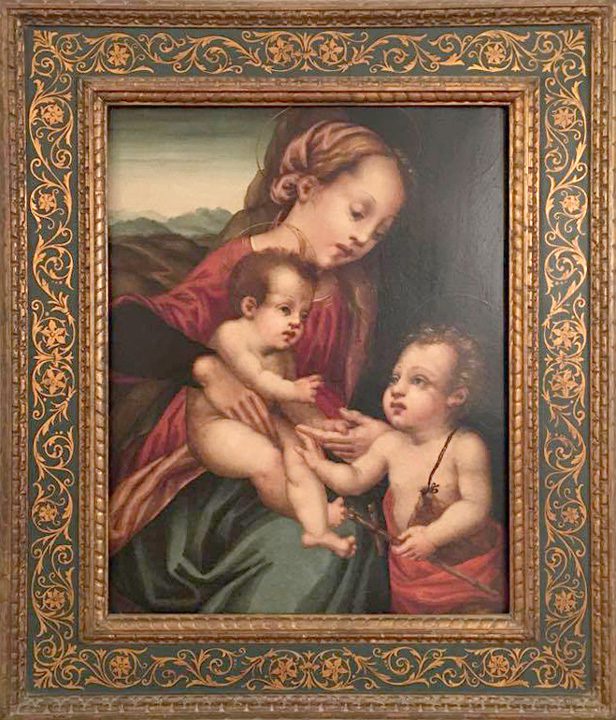J'adore les femmes
Katia Bassanini / Franz von Bayros / Giona Bernardi / Jérémie Blanes / Corrado Bonomi / Serge Brignoni / Jon Campbell / Mat Collishaw / Mario Comensoli / Pier Giorgio De Pinto / Martin Disler / Alex Hanimann / Paul Herrmann / Osias Hofstätter / Hermann Huber / Andrée Julikà Tavares / Béla Kádár / Patricia Jacomella Bonola / Paul Kleinschmidt / Yona Lotan / Meret Oppenheim / Maren Ruben / Valter Luca Signorile / Nina Staehli / Anonymous of the 15th century
Design objects
17 May - 18 August 2024
The exhibition entitled J’ADORE LES FEMMES sets out to express the feminine or the masculine, to the extent that these two aspects can be identified not in the basics of everyday life, but in the reflexive context of what the feminine and – as a consequence – the masculine dimensions represent in their general meaning, both philosophical and human, or of dialogue between the parties.
There is a fertile terrain for analysis in the wide range of multiple approaches to our carnal or metacarnal essence, both rational and irrational, in which reason and the intoxicated liberation of our senses also constitute the basis of our behaviours and of how we think. The feminine dimension, construed not as gender individualism, remains a shared characteristic and inspiration for reflection, one that was already tackled in antiquity and in lofty cultural environments, where the issue of the multifarious male and female nature was part of a humanist view of the human race.
These few considerations are compounded by untamed interferences and certain areas of disturbance, where the body prevails in its affirmation over the cultural dimension and other educational idioms and styles or religious contexts, which also stand revealed as other expressions of an ostracising, moralistic tone of politics, which comes from radicalisation to either right or left, or from other racial terrains of a more or less misogynist – if not (neo)fascist – nature, and sometimes in general from a dangerous classism of gender.
In the attempt to lend substance to a rationalist approach and to a vision of organisation and reorganisation of a post-contemporary human condition that appears to have been lost as we ourselves have gone off the tracks, if we were to imagine today that certain conquests actually constitute mistakes and a threat to stability, it would be tantamount to believing that the political state (since politics still tends to influence our behaviours) is better and more advanced than that of civil society, whereas we are in fact only too aware that civil society and the society of the state have only seldom found themselves in symbiotic equilibrium.
Discussing the concept of “feminine” – starting out from the universal wisdom that a Mother is the bearer of life – and how it compares or dialogues with the “masculine” dimension (and vice-versa) has always been something of a sign of cultural failure. Maybe only in early historical eras does this clash appear to have been transformed into an encounter. Hence the various religious and cultural facets [whether body and soul are one and the same, for example, as opposed to the credo preached by Christianity], can unquestionably play a fundamental role in the perception of the feminine and of the dimensions in their definition in a dialogue of reciprocal interferences and moral disquiet.
Every era has its totems to idolise, and the thermometer that shows a society’s values, construed as a perpetual motion, fluctuates continuously and in an evolutionary and repetitive circular manner. Nowadays, the bodily dimension prevails over knowledge and historical awareness, just as money prevails over values, signifiers over meaning and so on … and Masculine and Feminine are truly unfathomed concepts that drift further away, within a society that seems to be reverting to dividing reason from emotion, intellect from sentiment, real from virtual. Positing the artifice as the next step translates unequivocally into the resignation of the intellect and of reason.
Umberto Eco wrote [1] that freedom of speech and of expression is also freedom from rhetoric. Just as genius has never had a gender.
You the visitor are invited to approach the works on show in a space with a more sentimental and anti-heroic attitude, making those unitary adjustments in the dichotomic rhetoric between masculine and feminine.
In the specific case of these works, on the other hand, they do not trace a path to any unity of style and meaning, nor should they be interpreted in a communist vein, but individually, as though each single element were a part of a shattered mirror, in which each fragment reflects a part of those who observe it. The aim of this intimate, individual dimension is to lead – also through art history – to a dimension of contemplation and intimacy.
Mario Casanova, Tel Aviv, 2024.
Translation from Italian by Pete Kercher
[1] Umberto Eco, Five Moral Pieces, Ur Fascism.
Serge Brignoni (1903-2002), Féminin éternel, 1935. Collage on drawing, signed and dated lower left, 12.4 x 8.4 cm. Private collection, Switzerland (former Collection Herr und Frau Bernhard Müller, Berne).
Where
MACT/CACT
Museo e Centro d’Arte Contemporanea Ticino
Via Tamaro 3, Bellinzona.
Opening hours
Friday, Saturday, Sunday
2 p.m. – 6 p.m.
Entry
CHF 6.00



